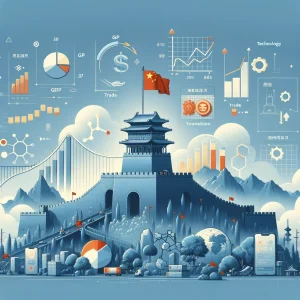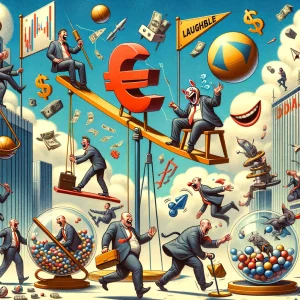Part of a series of deeper dives on BRICS members to see their individual economic and political trends to try to imagine how they will move forward on crypto and how this may affect the BRICS perspective on crypto.
Today, we focus on India in BRICS, often called the “Indian Tiger”.
Historical Background – Empires, Cultures, Regions:
- Indus Valley Civilization (3300-1300 BCE): The Indus Valley Civilization was a highly centralized society with a strong government and economy. The main economic output was agriculture, but the Indus Valley Civilization also had a well-developed trade network.
- Indus Valley Civilization map
- Mahajanapadas (600-321 BCE): The Mahajanapadas were a period of political fragmentation in India. There were over 100 mahajanapadas, each with its own government and economy. The main economic output was agriculture, but trade and industry also flourished during this period.
- Mahajanapadas map
- Mauryan Empire (321-185 BCE): The Mauryan Empire was a highly centralized empire with a strong government and economy. The main economic output was agriculture, but the Mauryan Empire also had a well-developed trade network and a strong manufacturing sector.
Mauryan Empire map
Post-Mauryan Era (185 BCE-320 CE): The Post-Mauryan Era was a period of political fragmentation in India. There were many small kingdoms and empires, each with its own government and economy. The main economic output was agriculture, but trade and industry also continued to flourish during this period.
Gupta Empire (320-550 CE): The Gupta Empire was a golden age for India. It was a highly centralized empire with a strong government and economy. The main economic output was agriculture, but the Gupta Empire also had a well-developed trade network and a thriving manufacturing sector.
Gupta Empire map
Post-Gupta Era (550-1200 CE): The Post-Gupta Era was a period of political fragmentation in India. There were many small kingdoms and empires, each with its own government and economy. The main economic output was agriculture, but trade and industry also continued to flourish during this period.
Mughal Empire (1526-1857): The Mughal Empire was a highly centralized empire with a strong government and economy. The main economic output was agriculture, but the Mughal Empire also had a well-developed trade network and a thriving manufacturing sector.
Mughal Empire map
British Raj (1858-1947): The British Raj was a period of colonial rule in India. The British government controlled the economy and the political system. The main economic output was agriculture, but the British Raj also developed a large industrial sector.
British Raj map
Independent India (1947-present): India is a federal republic with a democratically elected government. Pakistan and Bangladesh formed as separate Muslim majority countries. The economy is a mixed economy with a large public sector and a growing private sector. The main economic output is still agriculture, but the service sector is growing rapidly.
It is important to note that this is a very simplified overview of Indian history. There are many different perspectives on Indian history, and the level of centralization of government and economy has varied over time.
India – An Emerging Economy with a lot of unfulfilled potential
India’s highest exports by share of exports are Refined Petroleum, Diamonds, Packaged Medicine, Jewelry, Rice, and Raw Aluminum. This is followed closely by Motor Vehicles, Cars, and Broadcasting Equipment. Compared to Brazil or Russia we see a greater diversity of mixing raw materials and finer engineering products. India has a long history of meticulous and detailed craftsmanship that has evolved into a detail-driven industry. The country also has tried to build a national aerospace sector but still relies heavily on imports and technological help in this area. India successfully landed an unmanned mission on the moon this year while Russia’s attempt around the same time failed; showing growing expertise in this sector, even surpassing some more experienced spacefaring nations.
India is still exploring other industries to expand into. Many jobs are at risk with more and better performing AI in regards to IT developers and support over the phone.
India’s biggest imports include Crude Petroleum, Gold, Coal Briquettes, Diamonds, and Petroleum Gas. The gold and diamonds are used to produce the jewelry and processed diamonds that the country exports. It is because the diamonds are bought uncut and then cut, polished and sold that their value increases between the import and the sale from $26B imported value to $26.3B exported value in 2021.
Indian companies at large have a reputation for inconsistency and not of high quality when it comes to heavier industry. Strangely enough, this is the opposite of the reputation when it comes to cutting and polishing diamonds, precious stones, or making jewelry. India produces around three million lab-grown diamonds a year, accounting for 15% of global production, according to the Ministry of Commerce and Industry. It takes an expert with special tools to tell the difference between a synthetic diamond and one mined out of the ground. And many of those experts are in India.
It is interesting to point out that most imports and exports are raw materials or intermediate materials, with a hefty amount of exports being finished products like medicine and cars. India has skills, and resources, but has a long way to go to come close to reaching its full and vast potential.
Watch for improvements in infrastructure and new industries to pop up in the country for it to come closer to no longer being called an emerging economy.
India’s Trade Partners: BRICS, the non aligned movement, or the West?
Exports in 2021 saw India trade mostly with the United States, United Arab Emirates, China, and Bangladesh. From exports alone the BRICS share is nearly the same as the United States’ share on its own. And imports tell the opposite tale with the main trade partners being China, United Arab Emirates, United States, Switzerland, Iraq, and Australia. This makes India stand more with Brazil as having a diversified list of trading partners that don’t fit into the BRICS only.
India also doesn’t show a trade preference for non-aligned countries from the Cold War movement it had spearheaded.
What does all of this have to do with Crypto?
India’s current laws about cryptocurrency and CBDCs are still evolving. In 2018, the Reserve Bank of India (RBI) issued a circular prohibiting banks and regulated financial institutions from dealing in cryptocurrencies. However, in 2020, the Supreme Court of India overturned this circular, paving the way for the crypto market in India to develop.
The Indian government is currently working on a comprehensive cryptocurrency regulation bill. The bill is expected to ban all private cryptocurrencies in India, but allow for the creation of a government-backed CBDC. The bill is still in draft form and has not yet been passed into law.
In the meantime, there is no specific law in India that prohibits the holding or trading of cryptocurrencies. However, there are a number of regulations that apply to cryptocurrencies, such as the Prevention of Money Laundering Act and the Foreign Exchange Management Act.
Here is a summary of some of the upcoming cryptocurrency and CBDC laws in India:
The Cryptocurrency and Regulation of Official Digital Currency Bill, 2021: This bill is expected to ban all private cryptocurrencies in India, but allow for the creation of a government-backed CBDC. The bill is still in draft form and has not yet been passed into law.
The Prevention of Money Laundering Act: This act requires cryptocurrency exchanges to register with the Financial Intelligence Unit (FIU) and to report all suspicious transactions.
The Foreign Exchange Management Act: This act regulates the flow of foreign currency into and out of India. Cryptocurrency exchanges are required to comply with the provisions of this act.
It is important to note that the legal landscape surrounding cryptocurrencies in India is still evolving. It is important to stay up-to-date on the latest developments and to seek legal advice before making any investment decisions.
India goes back and forth between periods of wealth and centralization versus periods of chaos and poverty. Expect centralization as an integral philosophy to crypto regulation but with ups and downs in following those regulations depending on the government in charge.
For trade graphs:





